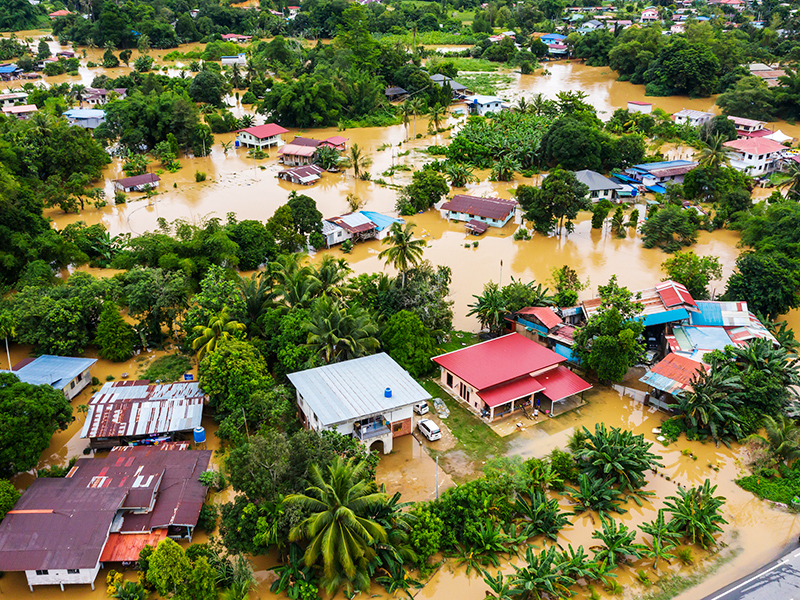
iStockphoto / VichienPetchmai
Authors
-
Samantha Harris
Former Associate Director, BSR
Tackling climate change requires tackling gender inequality. On International Women’s Day, an article in Business Green quoted L’Oréal’s Chief Sustainability Officer Alexandra Palt as saying, “I do not think we will see any advances in gender equality if we do not succeed in mitigating the consequences of climate change on women's lives.”
As the effects of climate change continue to exacerbate poverty, inequality and other social issues, the solutions we put forth must include social focus. This includes empowering women to be leaders. Even if slowly, we’re moving in the right direction. The international community has begun to mainstream gender-friendly decision-making through policies and solutions: in 2015, through the development of the SDGs, both climate change and women’s empowerment were prioritized as goals, and in 2017, the UN climate change negotiations put forth the Gender Action Plan to promote gender equality throughout climate change policy.
As these gender and climate solutions trickle down through global, national and subnational solutions, what does this mean for business?
First, as we’ve seen in multiple climate-fueled extreme events, climate risk can affect every aspect of a business from operations and supply chains to the communities crucial in providing raw materials or labor. Following severe flooding in Thailand in 2011, reported insured losses were estimated as high as US$20 billion, and more than 14,500 companies reliant on Thai suppliers suffered business disruptions.

Second, the opportunity for empowering women to lead on climate solutions can unlock multiple business benefits, including driving productivity and innovation, especially within sectors with large women workforces; protecting raw materials; increasing financial stability and returns; and strengthening the resilience of local communities because women are well connected in their communities. The broader business benefits of investing in women are already clear: BSR’s HERproject, for instance, found that following the implementation of workplace programs promoting women’s health in 37 factories across six countries, turnover of the workforce decreased by 4.5 percent. When women are empowered not just in the workplace but as changemakers and leaders for their communities, the benefits multiply and the return on investment grows. And companies are already seizing this opportunity: Through the Women4Climate initiative with C40, L’Oreal aims to provide climate change leadership opportunities for women in their own company and influence others to do the same.
Business has a role to play here not only because it’s the right thing to do, but because it makes pure business sense.
Although acting at the intersection of climate change and social issues, including women’s empowerment, are new topics for business, over the last few years we’ve seen companies step up to tackle the challenge, recognizing how it’s a win-win-win for business, society, and women.
Mondelez International, recognizing that increasing resilience of farmers and communities is necessary to maintain sourcing of one of their crucial commodities, has developed The Cocoa Life Program. The program increases women’s access to farm inputs and land ownership, supports young women by ensuring participation in youth-oriented programming, and helps women improve their livelihoods through access to finance, entrepreneurial skills, and more.
Business has a role to play here not only because it’s the right thing to do, but because it makes pure business sense. By addressing these barriers through the provision of basic human rights, access to education, finance and decision-making, and the removal of discriminatory laws, it enhances the resilience of women so that they can be better positioned and able to lead.
More specifically, companies can:
- ACT to put women at the center of all internal climate change approaches and solutions. In particular, they can provide women in their operations access to relevant trainings, inputs, financing, and technologies.
- ENABLE women throughout the value chain and broader community to effectively respond to climate-related events by linking them with local networks and partners, which can serve as mutual support mechanisms to strengthen climate change solutions.
- INFLUENCE underlying inequalities such as the lack of decision-making power or access to financial resources that exacerbate the disproportionate negative impacts for women in the context of a changing climate.
While undoubtedly women are disproportionately affected by climate change due to the various social, economic, political, cultural and economic barriers they face, women are far from the vulnerable victims as often depicted. Given the opportunity, women can be great leaders that will help to catapult society forward while tackling the greatest crisis we’ve ever faced.
While there are few examples of corporate solutions that aim to put women at the center of their climate change solutions, many are beginning to see the opportunity of expanding their women’s empowerment and climate change programs to intersect. The business case for opportunity is clear to put women at the center of climate solutions.
To learn more about business can act at the intersection of climate change and women’s empowerment, read BSR’s report, Climate and Women: The Business Case for Action. As an official partner of the Women Deliver Conference, which will take place from June 3-6 in Vancouver, Canada, BSR will also co-host three sessions on women and climate, exploring how to finance a “just” transition to a low-carbon economy and why empowering women and girls is key to addressing climate change. For more information, please contact us.
BSR’s latest sustainability insights and events straight to your inbox.
Topics
Let’s talk about how BSR can help you to transform your business and achieve your sustainability goals.







